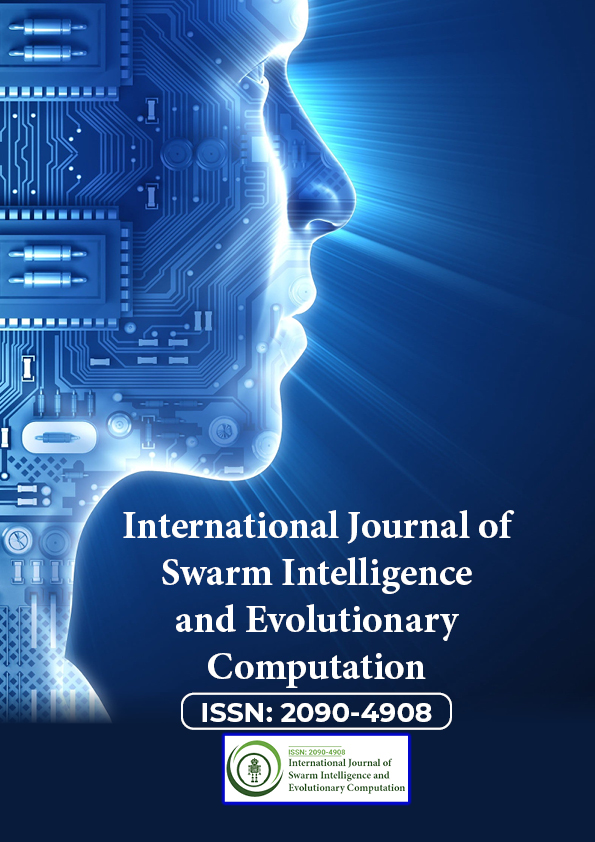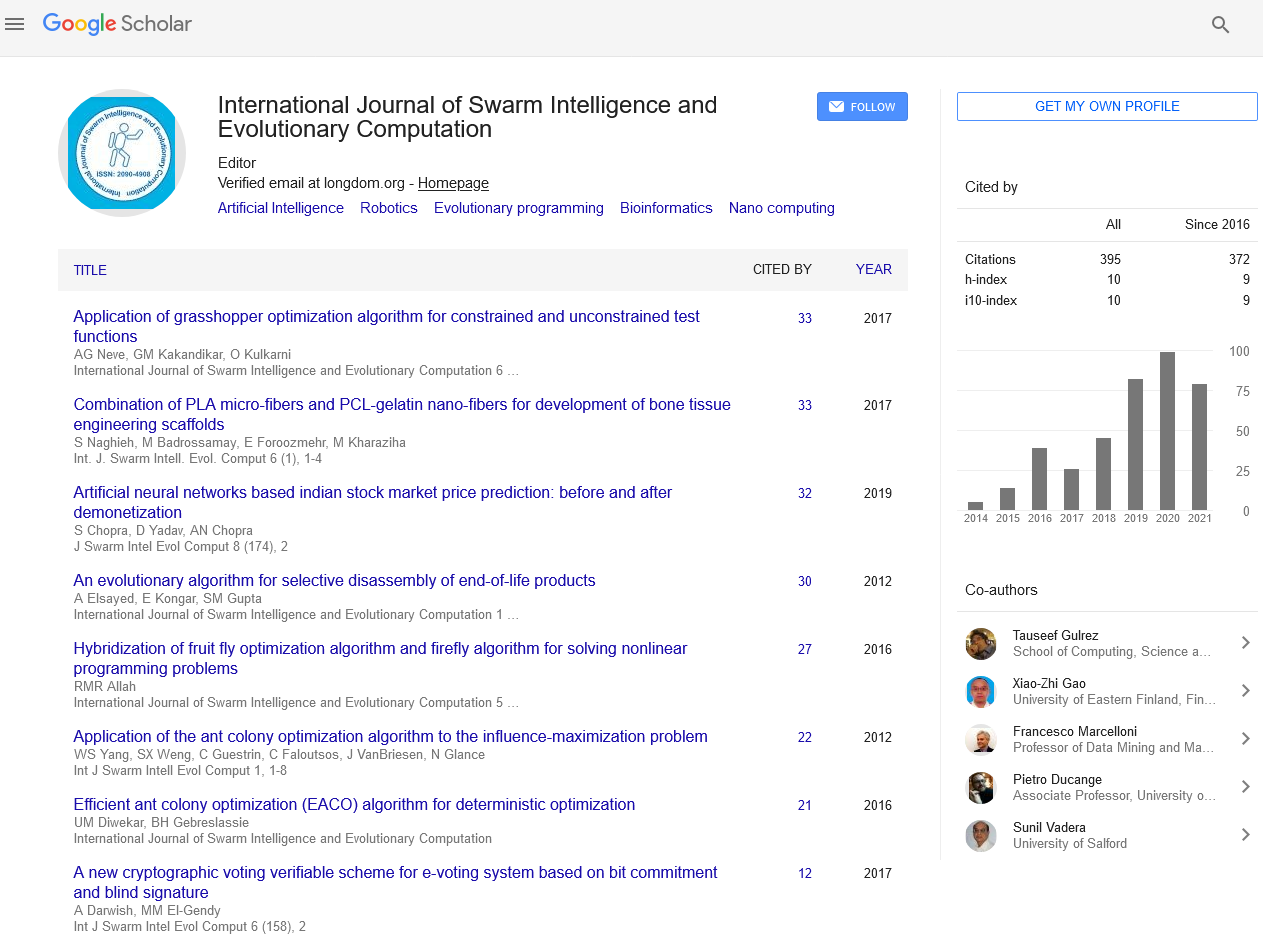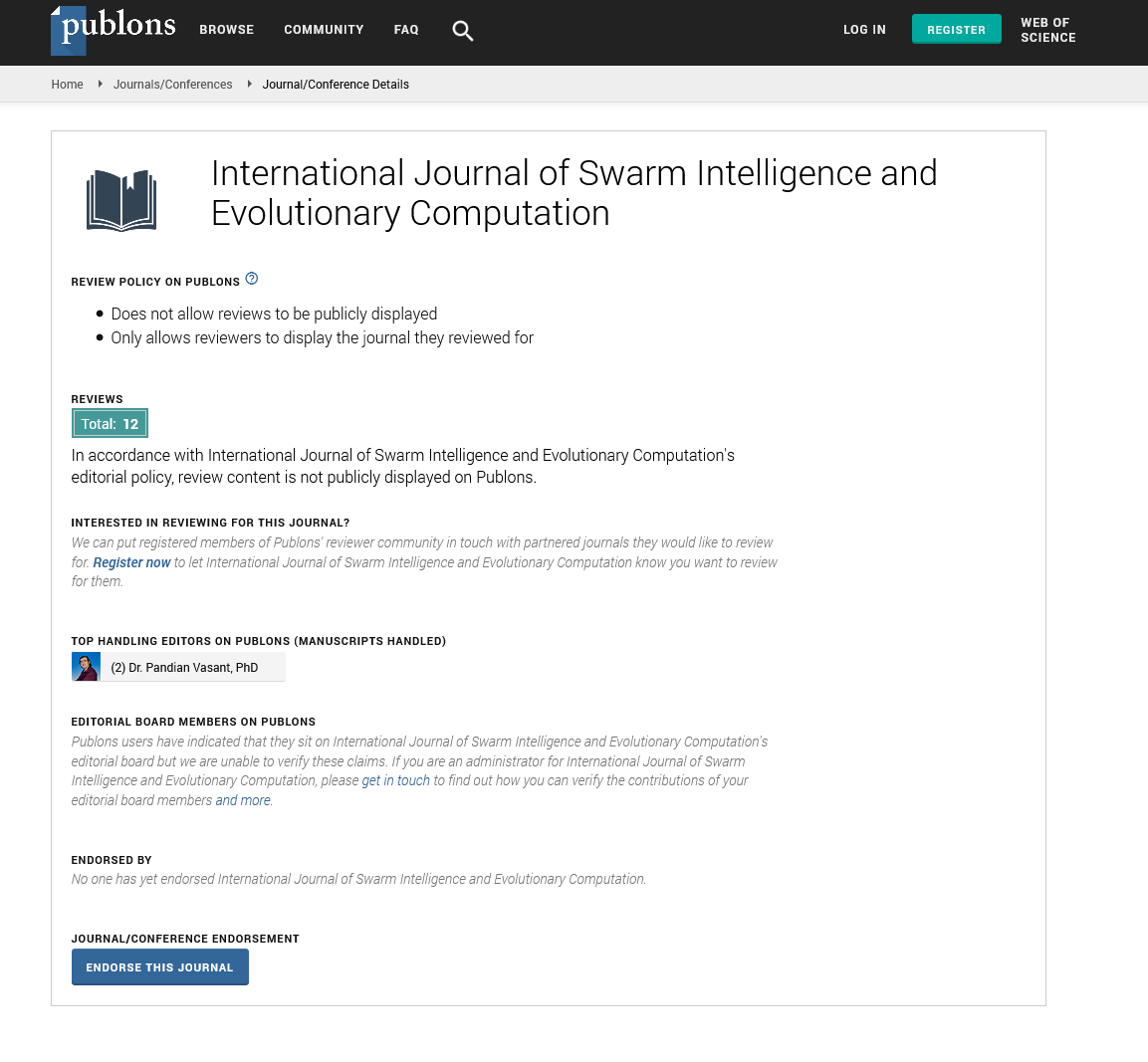Indexed In
- Genamics JournalSeek
- RefSeek
- Hamdard University
- EBSCO A-Z
- OCLC- WorldCat
- Publons
- Euro Pub
- Google Scholar
Useful Links
Share This Page
Journal Flyer

Open Access Journals
- Agri and Aquaculture
- Biochemistry
- Bioinformatics & Systems Biology
- Business & Management
- Chemistry
- Clinical Sciences
- Engineering
- Food & Nutrition
- General Science
- Genetics & Molecular Biology
- Immunology & Microbiology
- Medical Sciences
- Neuroscience & Psychology
- Nursing & Health Care
- Pharmaceutical Sciences
Perspective - (2022) Volume 11, Issue 2
An Overview of Ant Colony Optimization Technique
Cong Zhao*Received: 07-Feb-2022, Manuscript No. SIEC-22-15898; Editor assigned: 09-Feb-2022, Pre QC No. SIEC-22-15898(PQ); Reviewed: 23-Feb-2022, QC No. SIEC-22-15898; Revised: 28-Feb-2022, Manuscript No. SIEC-22-15898(R); Published: 07-Mar-2022, DOI: 10.35248/2090-4908.22.11.236
Description
Optimization issues are very critical within side the discipline of each clinical and industrial. Some real-lifestyles examples of those optimization issues are time desk scheduling, nursing time distribution scheduling, teach scheduling, capability planning, journeying salesman issues, automobile routing issues, Group-store scheduling trouble, portfolio optimization, etc. Many optimizations algorithms are evolved for this reason. Ant colony optimization is one in every of them. Ant colony optimization is a probabilistic method for locating most useful paths. In the technological know-how and researches, the ant colony optimization set of rules is used for fixing distinctive computational issues.
Ant colony Optimization (ACO) become first delivered via way of means of Marco Dorigo within side the 90s in his Ph.D. thesis. This set of rules is delivered primarily based totally at the foraging conduct of an ant for searching for a route among their colony and supply meals. Initially, it becomes used to resolve the famous journeying salesman trouble. Later, it's far used for fixing distinctive difficult optimization issues.
Ant colony optimization (ACO) is a population-based Meta heuristic that can be used to find approximate solutions to difficult optimization problems. In ACO, a set of software agents called artificial ants search for good solutions to a given optimization problem. The ant colony algorithm is an algorithm for finding optimal paths that is based on the behavior of ants searching for food.
Ants are social insects. They stay in colonies. The conduct of the ants is managed via way of means of the aim of looking for meals. While searching, ants roaming round their colonies. An ant time and again hops from one area to some other to locate the meals. While moving, it deposits a natural compound known as pheromone at the ground. Ants talk with every different through pheromone trails. When an ant unearths a few quantity of meals it incorporates as a lot as it may carry.
When returning it deposits pheromone at the paths primarily based totally on the amount and first-rate of the meals. Ant can scent pheromone. So, different ants can scent that and comply with that route. The better the pheromone stage has a better opportunity of selecting that route and the greater ants comply with the route, the quantity of pheromone will even growth on that route.
Let`s see an instance of this. Let don't forget there are paths to attain the meals from the colony. At first, there's no pheromone at the ground. So, the opportunity of selecting those paths is same meaning 50%. Let don't forget ants pick distinctive paths to attain the meals because the opportunity of selecting those paths is fifty-fifty. For fixing distinctive issues with ACO, there are 3 distinctive proposed model of Ant-System includes Ant Density, Ant Quantity and Ant Cycle.
Let see the pseudo code for making use of the ant colony optimization set of rules. A synthetic ant is made for locating the most useful solution. In step one of fixing a trouble, every ant generates a solution. In the second one step, paths located via way of means of distinctive ants are compared. And within side the 1/3 step, paths fee or pheromone is up to date. There are many optimization issues in which you may use ACO for locating the most useful solution. Some of them are:
1. Capacitated automobile routing Problem.
2. Stochastic automobile routing Problem.
3. Group-store Scheduling Problem.
4. Nursing time distribution scheduling Problem.
5. Permutation Float Store Problem.
6. Frequency venture Problem.
7. Redundancy allocation Problem.
8. Traveling salesman Problem.
Citation: Zhao C (2022). An Overview of Ant Colony Optimization Technique. Int J Swarm Evol Comput. 11:236.
Copyright: © 2022 Zhao C. This is an open-access article distributed under the terms of the Creative Commons Attribution License, which permits unrestricted use, distribution, and reproduction in any medium, provided the original author and source are credited.


